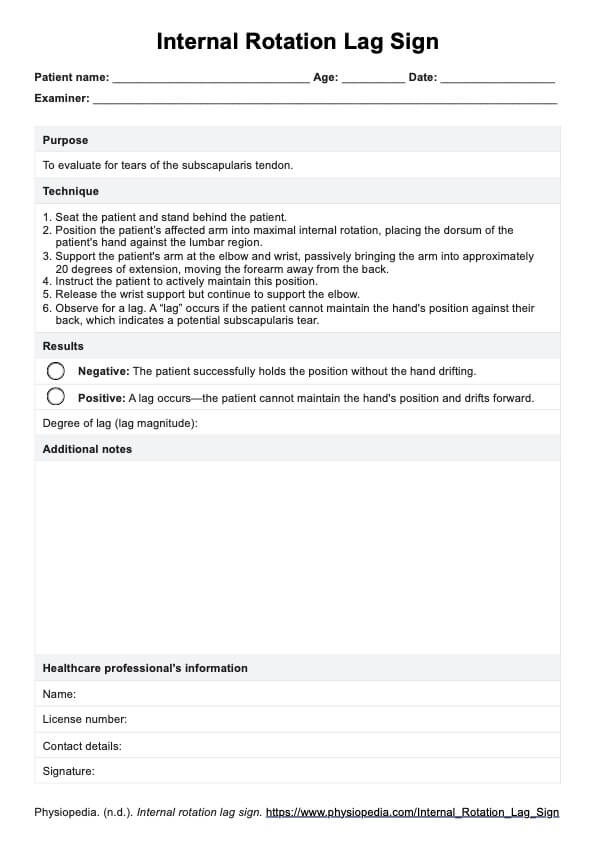Partial-thickness tears of the rotator cuff damage some but not all layers of the tendon tissue. In contrast, full-thickness tears extend through all layers of the tendon, often leading to a complete separation of the tendon from the bone.

Internal Rotation Lag Sign
Discover the Internal Rotation Lag Sign Test, a vital tool for diagnosing rotator cuff injuries and ensuring effective shoulder joint assessments.
Internal Rotation Lag Sign Template
Commonly asked questions
The sensitivity of the Internal Rotation Lag Sign is high according to research published by Miller, Forrester, and Lewis in 2008, making it reliable for detecting significant injuries to the subscapularis muscle tendon but less effective for identifying mild or partial-thickness tears.
Internal rotation limitations often include pain and decreased range of motion due to stiff or painful shoulder or joints, rotator cuff injuries, or post-surgical changes. These can hinder daily activities and reduce overall shoulder function.
EHR and practice management software
Get started for free
*No credit card required
Free
$0/usd
Unlimited clients
Telehealth
1GB of storage
Client portal text
Automated billing and online payments











